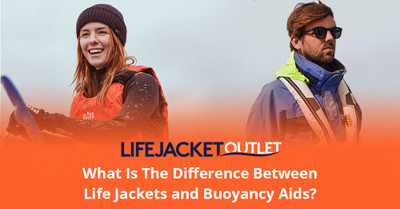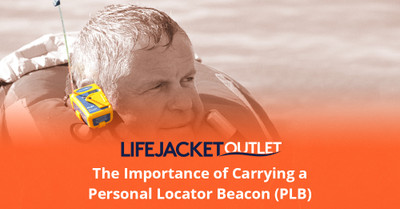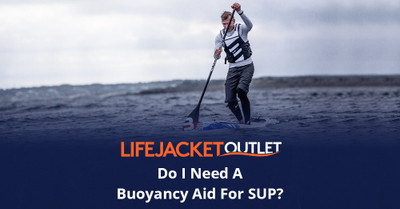27th Jun 2025
Understanding the difference between life jackets and buoyancy aids is essential when choosing the right personal flotation device (PFD) for any activity on the water. While these terms are often used interchangeably, they refer to two very different types of safety equipment, each designed for specific uses, environments, and levels of risk. Picking the wrong one can have serious consequences, particularly in emergencies where every second counts.
At their core, both life jackets and buoyancy aids are designed to keep you afloat. However, their level of buoyancy, distribution of flotation material, and intended use cases vary significantly. The primary difference lies in the level of life-saving performance they offer - specifically, their ability to keep an unconscious person’s airway above the water.
A life jacket is classified as a true life-saving device. It provides a high level of buoyancy, usually 150 Newtons (N) or more, and is designed to turn an unconscious person face-up in the water. This means that even if someone falls overboard and is incapacitated due to injury, shock, or cold water immersion, the life jacket will automatically rotate them so their face is kept above the waterline, reducing the risk of drowning. Most modern life jackets achieve this through either foam or gas-inflation systems, the latter of which are activated automatically or manually. Inflatable life jackets are popular among sailors, offshore anglers, and commercial marine workers because they offer comfort, freedom of movement, and life-saving capabilities in the most dangerous scenarios. Foam-filled life jackets are also available, typically used in rougher environments or by non-swimmers and children where instant flotation is needed.
By contrast, a buoyancy aid is designed primarily to assist a conscious and competent swimmer in staying afloat. It offers a lower level of buoyancy, typically around 50N, and is most commonly used for surface water sports such as kayaking, paddleboarding, dinghy sailing, and windsurfing. A buoyancy aid will help you float but it will not turn you onto your back if you're unconscious. It assumes the wearer is alert, active, and able to keep their head above water with minimal support. For that reason, buoyancy aids are not suitable for offshore or high-risk boating environments where the possibility of falling overboard and becoming incapacitated is high. They are better suited to situations where mobility and freedom of movement are more important than passive safety.
The design and fit of buoyancy aids and life jackets also reflect their purpose. Buoyancy aids tend to be more compact and flexible, often styled like a vest with soft foam panels, allowing greater range of motion for paddling or athletic movement. They’re quick to put on and usually feature front zips or side straps for a snug fit. Life jackets, particularly inflatable ones, are designed with bulkier front sections or air bladders that sit around the chest and neck to ensure proper flotation and rotation. These jackets also often include safety features such as crotch straps, harnesses, spray hoods, and reflective panels, which are rarely found on buoyancy aids.
When it comes to regulations and standards, life jackets are governed by stricter requirements due to their life-saving function. In the UK and Europe, life jackets must conform to ISO 12402-3 or higher for coastal and offshore use, while buoyancy aids meet ISO 12402-5 standards for inshore and sheltered water conditions. Many maritime authorities and employers insist on 150N life jackets or higher for commercial and offshore activities, precisely because buoyancy aids do not meet the necessary criteria for unconscious casualty protection.
In terms of maintenance, buoyancy aids require minimal upkeep beyond visual inspections and rinsing with fresh water. Foam does not degrade rapidly, so a well-looked-after buoyancy aid can last for many years. Inflatable life jackets, on the other hand, require regular servicing, cartridge checks, and re-arming kits to ensure they function correctly in an emergency. This extra maintenance reflects the complexity and importance of the technology within.
Ultimately, the choice between a life jacket and a buoyancy aid should come down to the risk profile of your activity. If there’s any chance that you could be knocked unconscious, thrown overboard, or left waiting in the water for rescue, a life jacket is the safer choice. If you're engaging in sports where you're likely to be in the water intentionally, and you're confident in your swimming ability, a buoyancy aid might be more appropriate.
It’s easy to underestimate the dangers of open water, but a flotation device that suits the environment, the user’s ability, and the specific water activity can make the difference between survival and tragedy. Understanding the role of life jackets and buoyancy aids - and choosing the right one accordingly - is one of the most important decisions any boater or watersports enthusiast can make.



